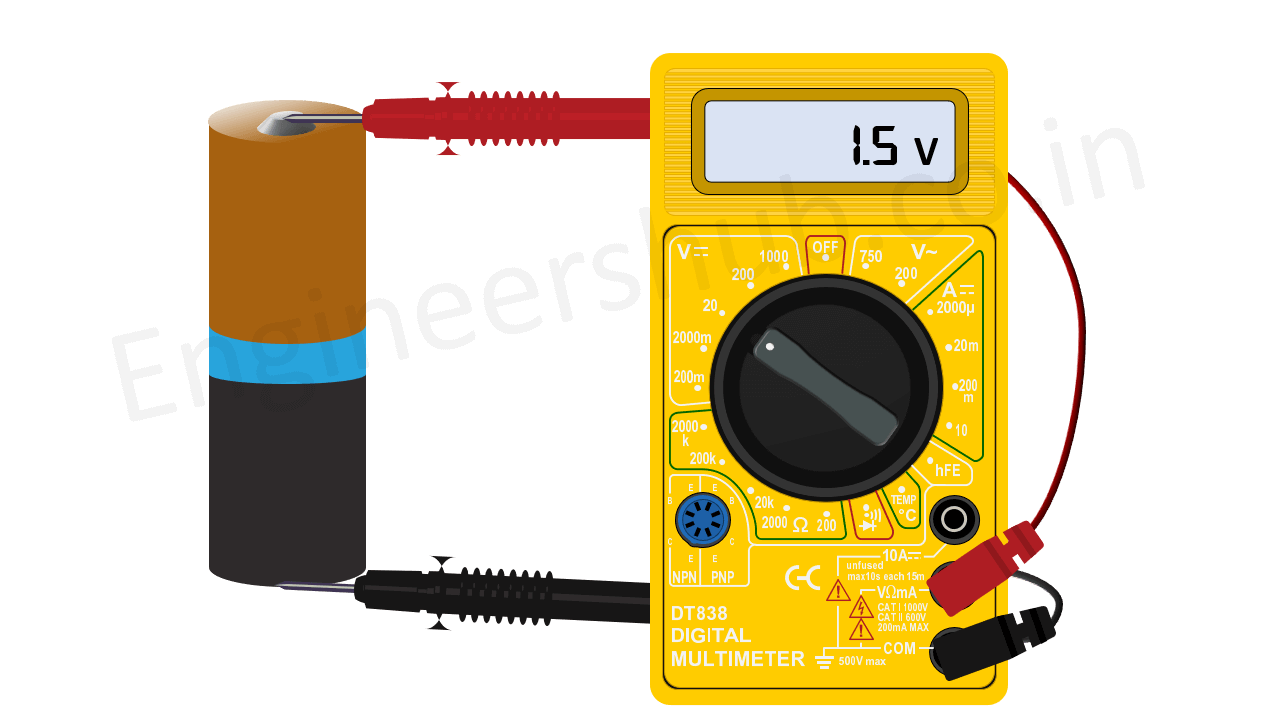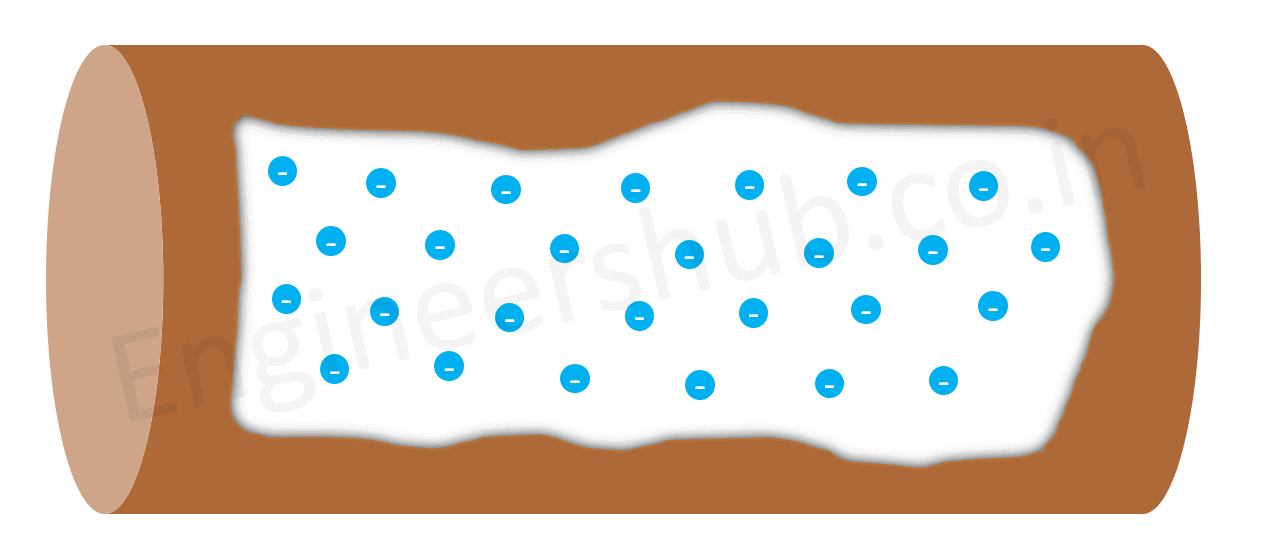Before you start working on any electrical and electronic circuit, you should learn about current, resistance, voltage, and other related concepts.
If you are a person who has just heard about voltage and does not completely understand – what is voltage then this article is for you.
In this article, you are going to understand what is voltage, the unit of the voltage, how voltage is measured, etc. in an easy-to-understand manner.
Let us get started.
Introduction
One of the most important characteristics of any electrical or electronic circuit is voltage.
Voltage is a critical characteristic that is monitored within circuits and utilized in electronic circuit design calculations, and it may be found in the specifications of a wide range of electrical and electronics items, from batteries to music systems, major appliances like washing machines, refrigerators and light bulbs to shavers.
The volt is a widely used unit of voltage or potential difference in all aspects of electrical and electronic circuits and electronic circuit design. The unit of voltage, like current and resistance, is critical in the design and implementation of any circuit.
The operational voltage of a piece of equipment is critical; electrical and electronic equipment must be connected to voltage-appropriate power supplies. For example, if you connect a 240 Volt TV to a 12 Volt battery, it will not light up, but if you connect a little 12 Volt bulb to a 240 Volt supply, it will draw far too much current, burn up, and be irrevocably damaged.
Furthermore, the voltage levels inside a circuit provide a key to its functionality; if the wrong voltage is present, it may indicate the cause of the issue. Many electrical and electronic components also have maximum operating voltages, so staying within those limits is critical.
Electrical voltage is a critical metric for these and other reasons, and knowing what it is can be a crucial requirement in any situation.
What is Voltage?
Voltage is often referred to as “power” – for example, how much power does that battery have, 3 volts, 9 volts?
Voltage is a component of power; however, it is better described as “pressure” or “force” on its own.

Understanding Voltage Further with Tank Water analogy
Let us understand the voltage with the tank water analogy.
Consider a water tank over the roof in a residential house. Think water pipe as conductor and water inside the pipe as electrons. The water has stored potential because it is at a certain height above the ground.

If you keep the tap close, water is still there inside the pipe, but there would not be any flow.
As the water inside the tank has stored potential similarly the battery has stored potential.

The conductor has free electrons but these free electrons do not have enough energy to move through the circuit.

What is the Potential Difference?
Now here, the question arises what causes electrons to move?
Well, to understand that we must understand the concept of potential difference.
The terms “voltage” and “potential difference” are frequently used interchangeably.
The potential energy difference between two places in a circuit is a better definition of potential difference. The difference in potential energy (measured in volts) influences how much energy is available to transfer electrons from one spot to another. The quantity indicates how much work can be done through the circuit in theory.
An AA alkaline battery, for example, provides 1.5 volts. 230 V (120 V in the United States) is available from most domestic electrical sockets. The higher the voltage in a circuit, the more electrons it can “push” and do work with.
In the below example, there is a potential difference between the battery’s two poles.
When you connect the conductor along with the load(here is the bulb), the pressure is created that pushes electrons (as current) which makes the bulb glow. The current returns to the power source.
Note that, to get any load in the ON condition there must be a return path (potential difference between two points of the source).
In a household electrical circuit, there is one live wire and one neutral. The neutral point is having low potential while a live point is having higher potential.
The loads are connected between these two points. Try disconnecting the neutral wire from the load. You will notice that the load won’t turn ON.
The difference in voltage/potential can be compared to water in a tank. When a tap is opened and water (like electrons) may flow, the larger the tank and the greater its height (and hence its potential velocity), the greater the water’s capacity to generate an impact.
What is the unit of voltage?
The unit of measurement for voltage is the ‘volt’ designated by the letter ‘V’.
An Italian physicist Alessandro Volta (1745-1827), invented the voltaic pile, which was the predecessor to today’s household battery.
Technically speaking voltage is measured in volts (V), which is the equivalent of one joule of energy per coulomb of charge that passes through a circuit. A coulomb is the standard unit of charge that is used to measure how much electricity is flowing through a circuit.
A volt is also defined as the amount of force required to force one ampere of current through one ohm of resistance.
Difference between AC Voltage and DC Voltage
Voltage can be either Alternating Current Voltage or Direct Current Voltage.
Alternating Current Voltage
In this type, electrons flow first in one direction, then in the opposite direction. It means that it is alternating in nature. Hence, this type of voltage is called AC voltage.
A generator is used to produce AC voltage. The voltage generated by utility companies for you can find in appliances at the home, machinery
in factories, computers, lights in offices, etc. requires AC voltage. Thus, the voltage generated by power generation companies is AC voltage.
DC (Direct Current) Voltage
Electrons flow continuously in one direction through a closed circuit. Therefore, this type of voltage is called DC voltage.
Batteries and DC generators produce DC voltage.
 This kind of voltage is used in battery-operated devices like flashlights, cameras, portable emergency lights, etc.
This kind of voltage is used in battery-operated devices like flashlights, cameras, portable emergency lights, etc.
Electrons flow continuously in one direction through a closed circuit. Therefore, this type of voltage called as DC voltage.
Batteries and DC generators produce DC voltage.
How to measure Voltage?
The voltage is one of the crucial variables that must be understood in any electrical or electronic circuit.
Voltage measurements can be made in several methods, but one of the most popular is by using a multimeter.
Multimeters can be either analog or digital, although as digital multimeters are more accurate and more readily available these days, they are more frequently utilized.
Finding the Right Voltage for Your Device
If you want to plug your device into an AC wall outlet, you can simply look at the rating on its plug to find out the voltage. However, if you want to use a different voltage with your device, you will need a voltage converter.
If you’re building your own circuits, you’ll have to use a multimeter to determine what voltage a device requires.
Multimeters have different sensors that measure different electrical properties and will help you determine the voltage your device uses.
Key Takeaways
- A voltage is nothing but the force that moves free electrons from one atom to another atom.
- If you want to become an electronics enthusiast, it is important to understand voltage.
- Voltage is the measurement of electrical potential energy between two points.
- It is measured in units of Volts, or V.
- Different types of voltage are used in electrical appliances so they can be compatible with the various voltages supplied by the grid.
- When plugging something into the wall, it is important to know the voltage of the device so you can find the right plug to use.
- While plugging any electronic device into an AC wall outlet, do check the voltage rating on its plug to find out the voltage.
More Articles like this







